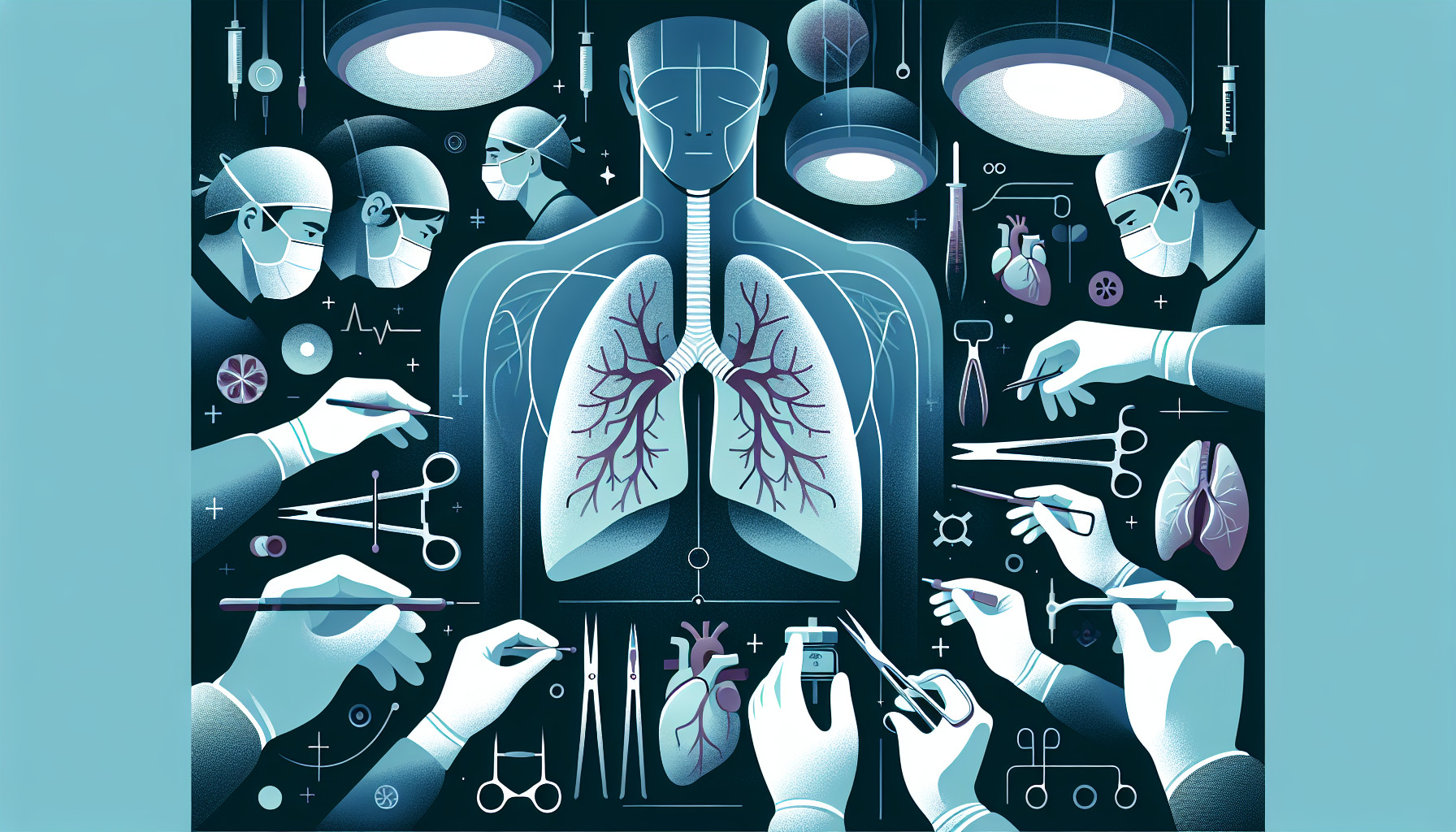Our Summary
This study looks at the rates of people in Australia who go back to work after having a lung transplant, and what might affect these rates. From October 2018 to August 2019, researchers gave questionnaires to 172 lung transplant patients at a hospital in Melbourne. They asked about things like their age, how long ago they had the transplant, and their work and social life before and after the transplant.
The results showed that just under 20% of the patients were working when they had their transplant, and about 36% were working after their transplant. This is a big increase (almost 85%) in the number of people going back to work after having a lung transplant. Almost all of the people who went back to work said their quality of life had improved. On average, it took about 180 days (or around six months) for people to go back to work after their transplant.
The researchers found that younger patients, those who had been working at the time of their transplant, and those with a higher socioeconomic status were more likely to go back to work. Patients with cystic fibrosis were also more likely to return to work than those with other conditions.
The study concludes that it’s a good idea to encourage lung transplant patients to go back to work, and that providing more support and resources to younger patients could help more of them to do so. This could improve their overall outcomes after their transplant.
FAQs
- What was the increase in the number of people going back to work after having a lung transplant?
- What factors make it more likely for a patient to return to work after a lung transplant?
- How long does it typically take for a patient to return to work after a lung transplant?
Doctor’s Tip
One helpful tip a doctor might tell a patient about lung transplant is to consider going back to work after the surgery. Returning to work can improve your quality of life and overall outcomes. It may take time to adjust, but with proper support and resources, you can successfully return to work after your lung transplant. It’s important to discuss your options with your healthcare team and make a plan that works best for you.
Suitable For
Patients who are typically recommended lung transplant are those with end-stage lung disease who have exhausted all other treatment options and have a poor prognosis without a transplant. Common conditions that may warrant a lung transplant include cystic fibrosis, chronic obstructive pulmonary disease (COPD), pulmonary fibrosis, and pulmonary hypertension. Additionally, patients must meet certain criteria such as being in good overall health aside from their lung condition, having a strong support system, and being able to adhere to the rigorous post-transplant care regimen.
Timeline
Overall timeline of a patient’s experience before and after a lung transplant:
Before transplant: Patient undergoes evaluation and testing to determine if they are a suitable candidate for a lung transplant. They may experience symptoms such as shortness of breath, fatigue, and difficulty breathing. They are placed on a waiting list for a donor organ.
Day of transplant: Patient undergoes surgery to receive a new lung. Recovery time in the hospital can vary but typically lasts around 2-3 weeks.
Post-transplant: Patient will need to take immunosuppressant medications to prevent rejection of the new lung. They will also undergo rehabilitation and physical therapy to regain strength and lung function.
Months after transplant: Patient continues to attend follow-up appointments with their medical team to monitor their progress and adjust medications as needed.
6 months after transplant: Patient may start to consider returning to work or other activities. It may take several more months for them to fully adjust to their new lung and regain their previous level of function.
1 year after transplant: Patient continues to have regular check-ups and monitoring to ensure the success of the transplant and overall health.
Long-term: Patient will need to continue taking medications and follow-up with their medical team for the rest of their life. They may also experience complications related to the transplant or underlying condition, which will need to be managed.
Overall, a lung transplant is a life-changing procedure that can greatly improve a patient’s quality of life and ability to function. However, it requires ongoing care and support to ensure the best outcomes.
What to Ask Your Doctor
Some questions a patient should ask their doctor about lung transplant include:
- What is the success rate of lung transplants at this hospital?
- What are the potential risks and complications associated with a lung transplant?
- How long is the average recovery time after a lung transplant?
- What medications will I need to take after the transplant and what are the potential side effects?
- How often will I need to follow up with my transplant team after the surgery?
- What lifestyle changes will I need to make to ensure the success of my lung transplant?
- How will having a lung transplant affect my ability to work or engage in physical activities?
- Are there any resources or support groups available for lung transplant patients?
- What can I do to improve my chances of returning to work after the transplant?
- Are there any specific factors in my case that may impact my ability to go back to work after the transplant?
Reference
Authors: Munsif M, Donnan M, Snell G, Levin K, Paraskeva M. Journal: Intern Med J. 2025 Mar;55(3):415-425. doi: 10.1111/imj.16641. Epub 2025 Jan 29. PMID: 39877944
